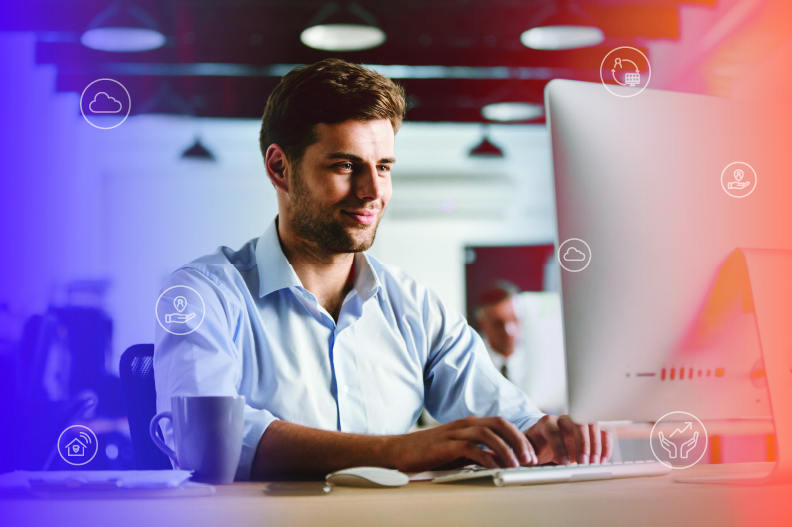27 Jan Redefining the workplace and its relationship with remote working
Recent research identified 80% of manager’s are concerned their employees do not have appropriate remote working environments or technology. With this statistic in mind, redefining the workplace and its relationship with remote working has to be a priority as we look ahead.
The same research report, The Conscious Workplace, identified that “Before the pandemic, only 30% of UK employees had ever experienced working from home”. It went on to say, “Despite this fact, it is not a new concept. For years psychologists, behavioural economists, and forward-thinking business leaders have championed the practice. Touting the numerous mental and physical health benefits it can bring.”
The report confirms that our past approach to remote working has served us sufficiently well for 6-8 months. However, as we look ahead to the future, when we again return to the office, will this current approach sustain us? So we face the challenge of ensuring our office communication and collaboration infrastructure is fit for purpose and responsive for the future. To achieve this, redefining the workplace and its new purpose is critical.
Read the Conscious Workplace:
Click to read The Conscious Workplace
Returning from mass remote working
Looking to the future people will most likely be splitting their days between both the office and home. Therefore it’s imperative for both employees and management that meetings, informal catch-ups and communication, are quick, easy and seamless.
The Conscious Workplace Report says, “The events of late have rapidly accelerated the need for shared workspaces in the cloud, face-to-face video calls and a raft of other work from home tools that could have enabled this style of work sooner. Despite historical concerns, office workers have transitioned to working from home, and for the most part, the system didn’t break. However, remote working through lockdown has resulted in a wide spectrum of experience in technology, covering both remote work and those who have been able to transition back into the office.”
During this sustained period of remote working people have become accustomed to working in a very immediate, hands-on way. They could manage their time more freely, collaborate, establish and set up meetings quickly and efficiently, flex how and when they worked and even relaxed how they dressed. As such, as offices become more available, its the responsibility of organisations to reconsider and begin the process of redefining the workplace, both the office and home.
Redefining the workplace, its purpose and relationship with remote working
The workplace undoubtedly now includes the home, as well as the office. Human behaviour and our daily interactions have changed – many of the positive aspects of that change will need to be considered as people work more flexibly in the future.
The report recommends, “Empathy must be offered to managers who are walking a tightrope whilst managing expectation versus reality. Suddenly, managers are responsible for more than staff productivity. They have to take charge of adapting and maintaining their work environments, whilst remotely managing staff who are no longer within direct reach.”
The top challenges when redefining the workplace and overcoming them
Some solutions can ease the process of redefining the workplace, such as quick and easy collaboration tools, digital processes and productivity cloud applications. Here are just a few to share some ideas;
Finding meeting spaces
With the aid of remote digital collaboration tools, we can start or join a meeting with just a click of a button when at home. But in an office environment organising a physical meeting has historically required a far more involved process. Firstly checking meeting space availability then securing the right meeting resources. However, smart workplace management solutions provide a real-time view of which meeting desks, rooms and spaces are available. This includes spaces that are currently in use, pre-booked (but currently not being used) or if they are under-utilised. Solutions such as these provide an equivalent ‘one-click’ experience for the office.
Ensuring critical messages are communicated clearly and immediately
There are an array of solutions that can assist in effective communications across single or multiple office locations. For instance;
- ‘Multiview’ on multiple locations across the office, laptops, desktops and mobile – sharing news, health and safety reminders, travel. Helps visitors, employees and customers access the latest information. A single management dashboard can update these messages from one remote location across a range of multiple communication channels.
- Managing visitors and employees with digital print and integrated digital signage and IPTV
Wayfinding and integrated intelligent building management systems
Whilst redefining the workplace there are cloud solutions available that can be integrated with what you already have in place. These can provide the ability to manage and control the office to ensure comfort and maintain an optimal working environment. Solutions to regulate heat, light and humidity in the building. Or to help meet compliance standards such as safety notices, regulations and logistics.
HR and Management tools
There are also management tools to ensure the right employees, both remote or in the office, have seen the correct training video. These can also incorporate additional features such as hands-free/contactless updates and controls options, reporting and tracking functionality.
Conclusion
Whether your challenge is communication, wellbeing, space or productivity there are solutions to help make your workplace fit for purpose. That includes redefining a workplace to improve efficiency, addresses people’s needs and create a smart and safe environment.
To learn more about this subject why not watch our recent webinar – ‘How digital signage should support your smart and safe workplace‘.
Work Together, Anywhere – Helping business succeed in a changed world




